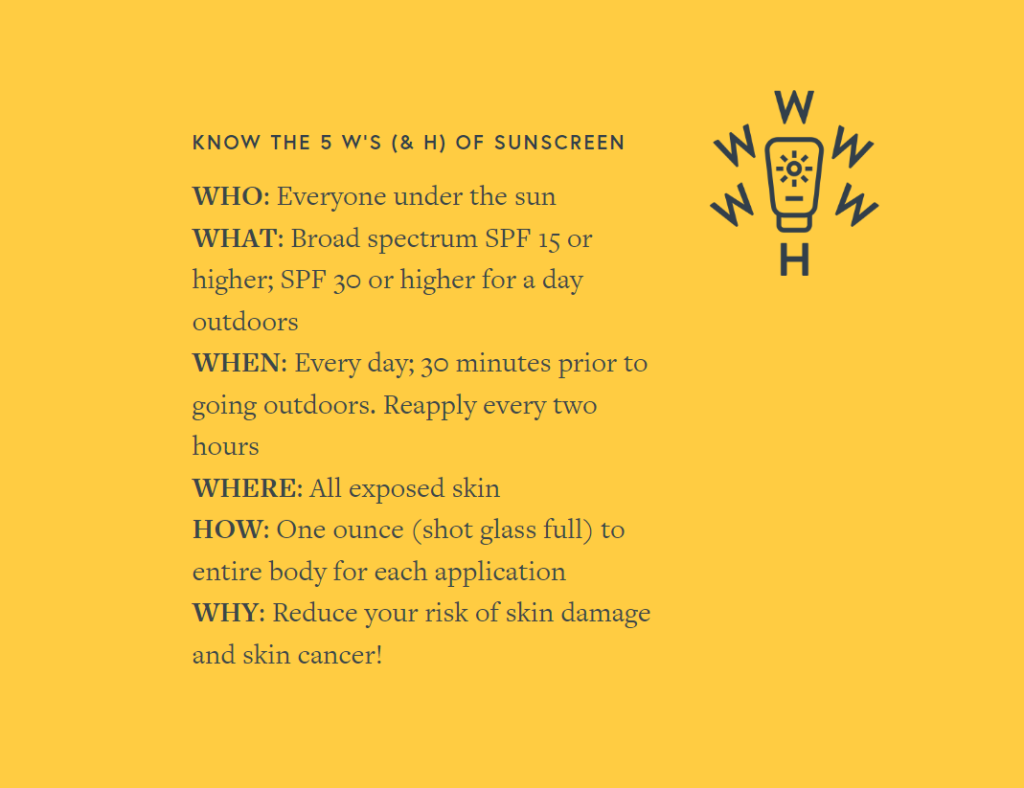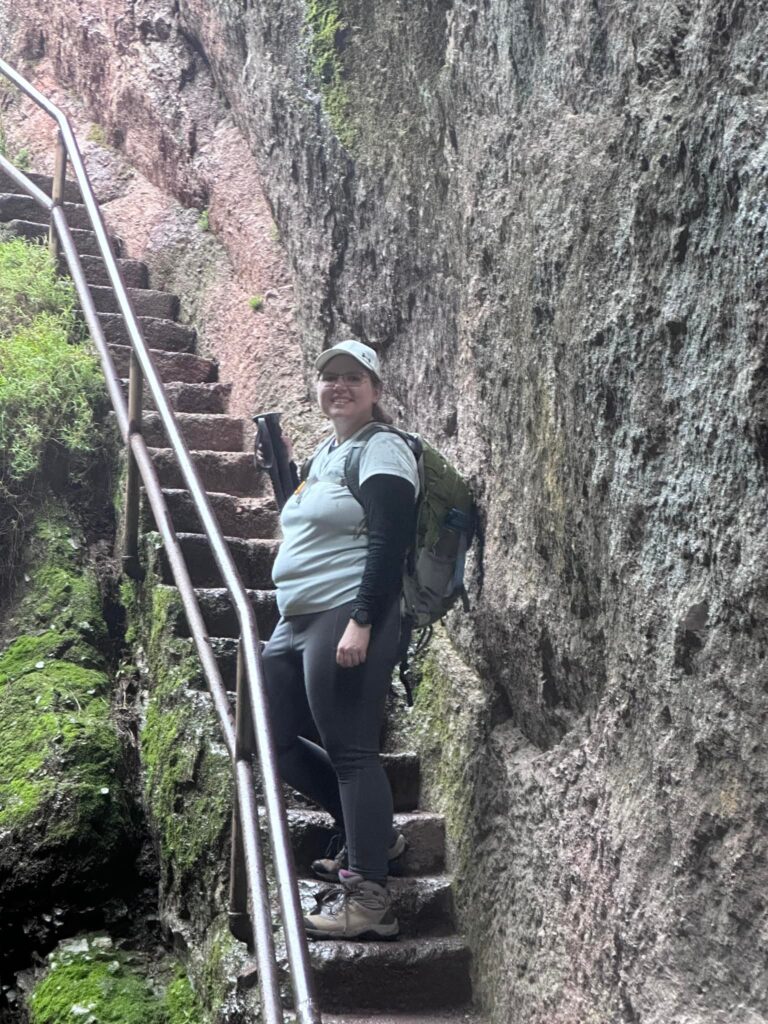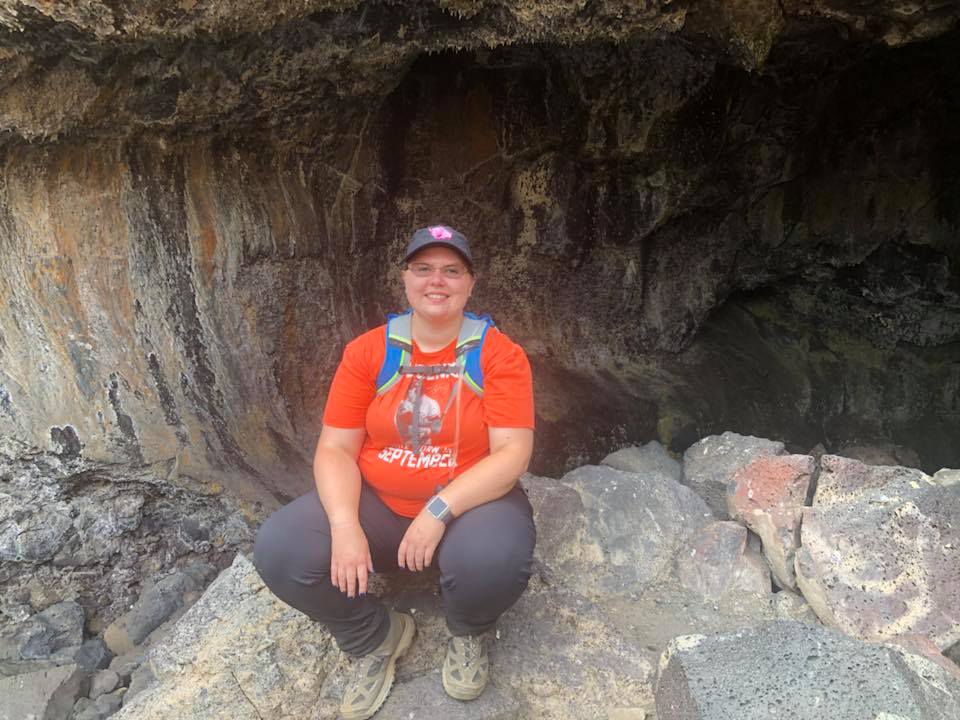Carrying your 10 essentials is critical whether you plan a quick hike on a familiar path that is a couple of miles or you are planning a long hike. Imagine you decide to go out with your friend for the day to see the sites. It’s only a couple of miles round trip, so it’s no big deal, right?
One wouldn’t think so, but accidents can happen anywhere! While on one of my first hikes of the season, my friends and I encountered a lost hiker situation. To make matters worse, the lost hiker didn’t have a way to call for help, food, heat, or a light source. This is where I should mention we were on a sunset hike, and it’s early spring, making finding the hiker more critical.
If they had been prepared with their 10 essentials, it would have been a little less urgent because they could have either found their way off the trail or sheltered in place until they could be located.
There is no judgment here! I am sharing this story to save a life and educate on the essentials of hiking. Just so you know, you may need them to help someone else while on the trail. Injuries can happen anywhere, weather patterns can shift, or getting back to the trailhead can be delayed for several reasons. In this case, the friends became separated.
This blog post contains affiliate links which may reward me monetarily or otherwise when you use them to complete a qualifying purchase. For more information, please see the Earnings Disclaimer. As an Amazon Associate, I earn from qualifying purchases.
Table of Contents
Toggle1) Navigation Tools
Have a general idea of where you are going before hitting the trail! Where are you planning to hike, and how hard is it? Plan your route and have an idea of how long it will take you to hike it.
Map and Compass
Knowing how to read a map and compass and carrying them are essential. While electronics are fantastic tools, what will you do if they fail?
If you are unfamiliar with using a map and compass, I suggest attending a navigation class. REI is an excellent place to check in the US.
GPS Devices
A GPS device allows you to track your location on a digital map. Many have features, with subscriptions, that allow messaging and location transmission from the device. While it is lovely to unplug from phones in the mountains, especially as a solo hiker, it is nice to be able to check in with my sister to let her know if I’m delayed on the trail or I’ve taken a detour. I recommend this one a Garmin inReach mini 2.
Personal Locator Beacons
These are great for true emergencies, without subscription costs or messaging features. You register your personal information to it, and it operates through NOAA. The sole function of these devices is to be able to send an SOS signal. While they can be spendy getting a good quailty one is essential, my recommendation is an ACR ResQLink, they last 5 years.
Cell Phones
Our phones have come a long way. However, there is usually no coverage on trails, and their batteries die quickly because they are always looking for a service connection. Be sure you have a dependable way to call for help if you need it.
Gaia is a good phone app, but there is a subscription fee. The app shows elevations and trail difficulty, and you can download the map for offline use.
2) Food
This is number two because I like food. If you plan to be out for a day, take at least an extra day’s worth of food. Having quick items that you can eat without cooking is always good. I personally like to carry jerky and Clif Bars in my pack because they provide good energy and are easy to eat. Having extra food can help to keep your morale and energy levels up. A human can survive, on average, three weeks without food, but it will suck.
3) Water
Staying hydrated is critical on the trail. Without proper hydration, you can become disoriented and experience muscle cramps and fatigue, leading to eventual organ failure and death if not corrected. Drinking water before you become thirsty is vital. In the worst-case scenario, most humans can survive three days without water.
Knowing where to find water sources is an essential part of trip preparation. If you need to source water on the trail, how are you going to access that safely? Easy options include chemical and filtration routes. I carry a LifeStraw. However, a Sawyer Squeeze is a good option and will likely be my next upgrade.
|
Primary Rating:
4.8
|
Primary Rating:
4.7
|
Primary Rating:
4.7
|
|
$17.49
|
$45.95
|
$8.97
|
4) Extra Clothes and Rain Gear
Always bring layers! I always carry extra socks, gloves, and a warm hat in my pack. The weather can sometimes be unpredictable on the trail, and if you get injured, you may have to stay outside overnight. Be sure also to carry a rain jacket to keep water off your body. If you don’t have a backpack cover, you can use a trash bag in a pinch.
5) Sun Protection
Being prepared for the sun includes your eyes, skin, and clothes. According to the WHO International Agency for Research on Cancer, skin cancers are the most common cancer diagnosed worldwide, with more than 1.5 million new cases in 2022. Take your skin health seriously.
Sunscreen
When spending time outdoors, it is always recommended that you wear sunscreen. Wearing it correctly reduces the chances of getting skin cancers by 40-50%. Use chapstick with SPF in it.

Sunglasses
Sunglasses help prevent eye damage. If you plan to hike in the snow, get glacier glasses specifically for this purpose. Ask your eye doctor or someone knowledgeable about your specific needs.
Sun Protection Clothing
Many clothes made for hiking come with ultraviolet protection factor (UPF) ratings to tell you how effective they are against the sun. A UPF rating is similar to looking at SPF ratings for sunscreen; look for a higher number for better protection. Wearing a hat is also good sun protection; while a full brim is recommended, I wear a baseball hat.
6) Emergency Shelter
Having a shelter can be the difference between life and death on the trail. In a survival situation, a shelter should be established within three hours of the emergency. Shelter options include tarps, space blankets, and bivy sacks. I carry a Don’t Die in the Woods because it’s lightweight and compact. If you choose to use space blankets, check them often, as they can degrade.
Carry some Paracord in your pack; it can help create a shelter, potentially catch food, start a fire, make repairs to your gear, and much more.
7) First Aid
A first aid kit is essential, but knowing how to use its contents is even more critical. Many kits come preassembled and in many varieties. Be sure to open the kit before you need it and see what’s available. I often find I want or need to modify a premade kit a little bit.
A kit should include a tourniquet, gauze pads, a way to clean the injury, blister treatments, bandages, tape, gloves, an ace wrap, scissors, ice, and pain medication like Tylenol and Ibuprofen.
8) Fire
Please really take into consideration if a fire is necessary for survival and if you are in a safe location to start one. They can be a great smoke signal and heat source in an emergency. There are options for fire starters, including:
- Dryer lint from your dryer (make sure there is no fragrance in your dryer sheet and you store it in a water-tight way).
- My preferred method it to use cotton balls lightly rolled in petroleum jelly and stored water-tight.
- I carry a lighter from the store, but it is best to carry two if you go this route.
- Waterproof matches
- Light My Fire is a good brand for a firestarter.
9) Light Source
Be sure to carry a headlamp or flashlight with extra batteries. I recommend taking the batteries out when not in use and, at minimum, checking the light out before hitting the trail; I learned this the hard way when my flashlight wouldn’t turn on when I needed it.
Don’t rely on your phone flashlight. They aren’t that bright, and chances are your phone battery is low due to being on a trail and searching for service.
After encountering the missing hiker situation, I plan to carry two lights in my pack from now on to have a backup or one to loan.
10) Knife or Multitool
On a day hike, I carry a single-blade pocket knife. It is vital for every trip and can be used to repair gear, create a shelter, prepare food, and perform first aid.
If you’re planning to be out longer, perhaps a multitool would be best, as you’ll have more options for tools should the occasion arise.
STOP
Remember, should an emergency, accident, or illness occur, STOP.
S: Sit down
T: Think
O: Observe
P: Plan
Final Thoughts
Our group was able to locate the hiker who had separated from his friend. Everyone made it safely off the trail, but it could have been much worse. Please always hike with your 10 essentials and ensure your day hiking pack is ready!














